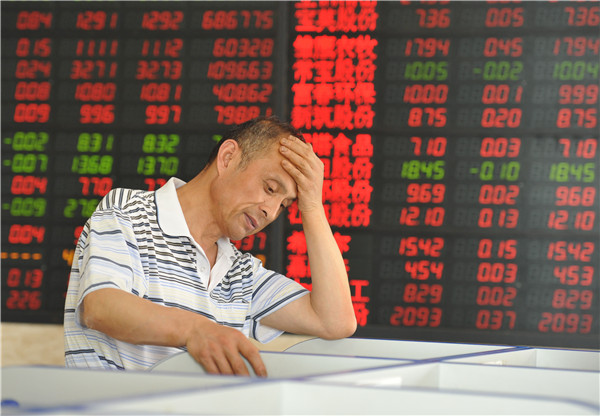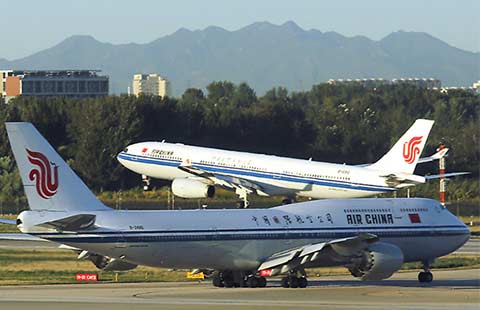It's the season of sluggishness for equity investors
By LI XIANG (China Daily) Updated: 2016-05-23 07:33
 |
|
A stock investor reviews market information at a brokerage in Fuyang, Anhui province. The current choppy market is raising investors' concern about the weak economic fundamentals, experts said.AN XIN/CHINA DAILY |
Sentiment weak due to downside risks to growth and monetary policy uncertainty
Investors will likely see a mixed and sluggish trend in the Chinese stock market this week as the downside risks to China's growth outlook persist amid rising concern over policy uncertainty, analysts said.
The benchmark Shanghai Composite Index suffered directionless volatility last week, moving sideways around the 2,800-point mark in light trading volume, which underscored weak investor sentiment.
"The trading turnover continued to shrink and the value of margin trading has slid toward the lowest level in a year, indicating that the market sentiment will continue to be weak," said Wang Yi, an analyst at Great Wall Securities Co.
Wang said there is a high probability that the market, now without sufficient momentum to trend upwards, will maintain the sluggish trend.
But there is not much room for any sharp decline either.
The choppy market trading reflected investors' concern about the weak economic fundamentals and the stronger chance for a rate hike by the US Federal Reserve in June.
Key economic data for April, including industrial production, retail sales and fixed-asset investment, missed estimates.
"Downside risks to China's growth outlook persist, especially if policy support becomes less effective as leverage continues to rise," analysts at credit ratings agency Moody's Investors Service said in a report.
"We maintain our expectation that China's economy will gradually slow to around 6.3 percent in 2016 from 6.9 percent in 2015, with significant fiscal and monetary policy support," they said.
Another factor that could unsettle the market is the rising uneasiness among investors about Beijing's policy direction, especially after a recent article in the People's Daily, citing an unnamed authoritative person, criticized the use of massive easing to stimulate growth and stressed an "L-shaped" economic growth path for China.
Some investors have lowered the expectation for more monetary easing as they fear that the policymakers in Beijing may have shifted away from such a measure to stabilize growth.
"For the time being, it seems that the policy tilt is shifting away from supporting growth.
"We have seen this before, and it will be interesting to see to what degree Beijing permits momentum loss in the second half of this year," said Jeremy Steven, Asia economist at Standard Bank.
Credit growth in April slowed substantially, with total social financing increasing by a mere 751 billion yuan ($115 billion), down massively from 2.3 trillion yuan in March.
"One point does not make a trend, but the general feeling here in Beijing is that authorities have realized that rapid credit growth is not in the economy's best interests," Steven said.
- Premier urges less red tape, improved regulation, better services
- Zhangjiagang Rural Commercial Bank receives IPO nod
- Visa championing 'responsible innovation' in China
- BAIC speeds up to overtake foreign rivals
- West China is ready to zoom around in new-age 'luxury' autos
- Chinese businessmen spin billions from animal-feed business
- It's the season of sluggishness for equity investors
- Chinese brands to continue to lead the MPV market

















